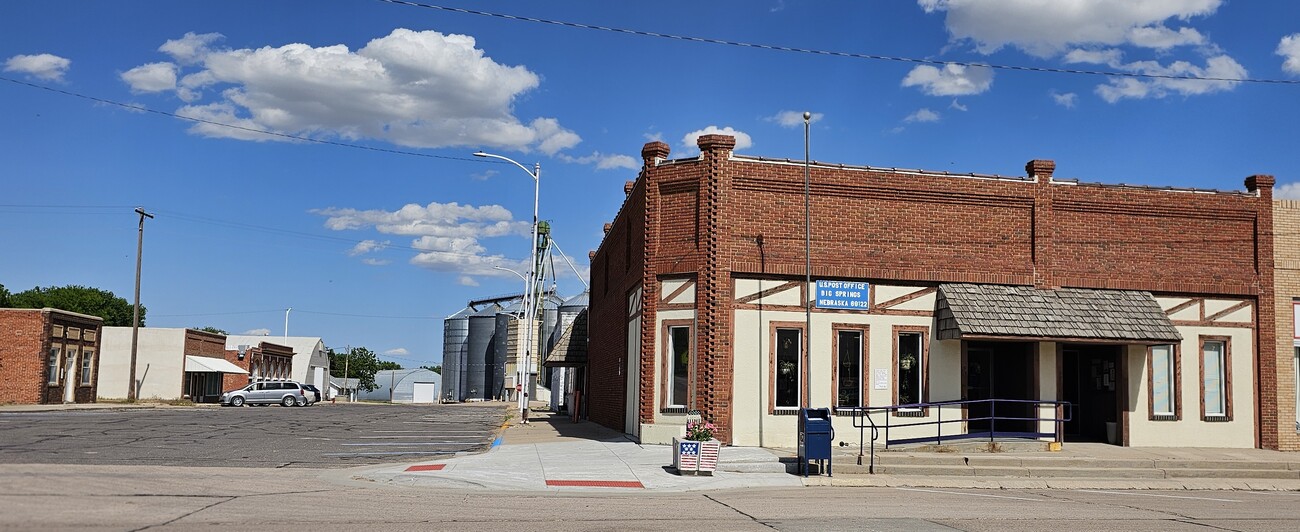General Information
 History
History
Big Springs, located 10 miles east of the Nebraska-Colorado border, is a small community with a big heart. Four hundred of the friendliest people in western Nebraska call it home. The town was named after a spring that provided early Indian tribes with fresh water. In time, the stream became a water source for steam engines of the Union Pacific rail line. Today, Big Springs is located near the junctions of two important interstate systems: I-76, a link from Denver, Colo., and I-80 which is a main east-west route across the United States. These systems provide nationwide access to Big Springs.
Big Springs was founded in 1884 through grants designated by the Union Pacific Railroad to provide a haven for the men who were tirelessly pounding steel and laying ties for the railroad line. The railroad was a major player in settling the western frontier.
Originally, Big Springs consisted of the Phelps Hotel and a few other buildings that provided the barest necessities for rail line workers. Edwin Phelps, a Union Pacific bridge engineer, and his wife Sarah were among the first to arrive in the new village. Seeing the workers' need for housing, they built the historic Phelps Hotel in 1885. With the development of more convenient, reliable transportation, many pioneer families began arriving and would spend their first few weeks at the hotel. With high hopes, they began to break ground and build soddies. Faced with the many dangers of life on the plains--failed crops, severe winter blizzards and the scorching summer sun--they persevered. In time, a thriving community was established in the South Platte river valley and adjoining table lands. By the end of the century, Big Springs was bustling with activity. The town continued to grow and prosper, becoming an incorporated village on May 15, 1917.
The renowned Oregon Trail passes through Deuel county near Big Springs. One historian referred to this trail as the "Interstate of the 1800's." The California Crossing, a few miles east of Big Springs, has been described as the most significant river crossing along the Platte river for the pioneers. The rough terrain restricted the routes the wagons could take up the hill, causing deep ruts which are still visible about two-thirds of a mile north-northwest of the marker (erected by the National Parks Services). A few miles to the northwest, the weary travelers came to Ash Hollow where they lowered their wagons down cliffs with ropes (due to the steep descent into the North Platte river valley). These sites are an important part of the historic heritage of our community.
In 1876, the notorious Sam Bass and his gang of desperadoes robbed an express train east of town, escaping with a reported $60,000. The loot was divided beneath the "lone tree" east of town. Eventually the law caught up with the gang and they were all killed during various gun battles in Texas. A new apartment complex being built in Big Springs has been appropriately named the "Lone Tree" apartments.
In the early and mid-1900s, the community was primarily involved in farming. However, due to the advancement of farm technology and the need for fewer agricultural workers, a decline in population became evident. It is encouraging to see many local graduates returning to establish their homes and businesses both in Big Springs and in neighboring towns. The establishment of the interstate highway in the 1970s was a deciding factor in the town's growth. Utility services, availability of housing, an excellent school system and friendly churches have attracted a number of people to Big Springs. Close proximity to scenic Lake McConaughy also makes living in this area very desirable.
The folks of Big Springs invite you to stop by and see why we are proud of our home town.






